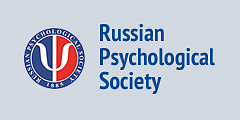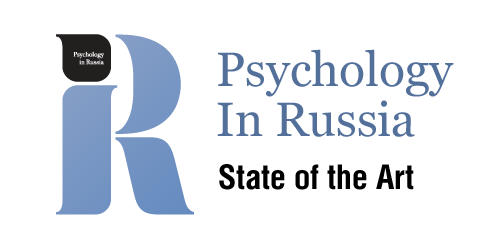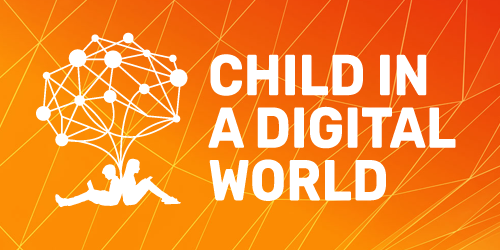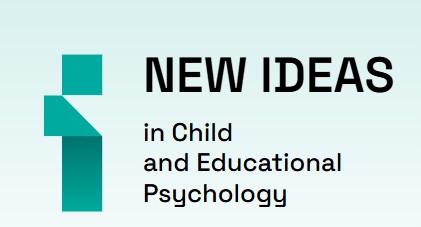Empirical studies
-
-
Background. Psychological well-being ensures the positive functioning of theartist’s personality, which includes internal (subjective) and external (objective) factors. The dynamism of the art market, instability of demand and orders, displacement of individuality by mass art lead to emotional tension, increased anxiety and, as a consequence, to a decrease in the level of well-being and to the growth of psychological insecurity of artists. Psychosemantic space reflects social representations that reveal the most significant and prioritised sources of maintaining an optimal level of psychological well-being for artists.
Objectives. The aim of the study was to identify and describe meaning groups of sources of psychological well-being of artists.
Study Participants. The research participants were 57 people aged 19 to 60. Data processing was carried out by content analysis. The criterion for selecting the sample was the profile education obtained in a specialized secondary or higher education institution.
Methods. A survey with an open type of questions about well-being among artists was conducted. Data processing was carried out by content analysis and by the method of condensation of meaning.
Results. The most frequently occurring semantic groups of factors of psychological well-being are identified. External factors of psychological well-being of artists include environment, relationships, quality of life and educational environment. The internal factors of artists’ psychological well-being include: health and self-perception.
Conclusions. The selected semantic groups are reflections of emotional, communicative and behavioral components of external and internal sources of psychological well-being of artist. They determine the psychosemantic space of the studied phenomenon.
Practical application of the results. The findings give rise to the study of social representations of artists’ psychological well-being. These results can be used by artists to optimize their current state; by psychologists and teachers to develop psycho-corrective and psycho-prophylactic programmes aimed to increase the level of well-being through the actualization of artists’ personal resources.
Keywords: psychological well-being; artists; psychosemantics; social representations; personality resources; content analysis DOI: 10.11621/LPJ-24-17
-
-
-
Background. Person’s civil and ethnic identity, which are components of social identity, develop during socialization under the influence of a number of factors. J. Berry identifies cultural, political, economic and historical factors as the basis for identity formation. The scientific novelty of the work lies in the study of the role of the cultural factor, namely the structure of values, in the formation of a positive civic and ethnic identity of Russians.
Objectives. The purpose of this work is to study the structure of the ethnic and civic identity of Russians as well as the influence of individual values on their formation.
Study Participants. The study was conducted with the participation of 1014 respondents, ethnic Russians, aged from 19 to 83 years (Mage = 41 years; SD = 13.04; 527 women and 487 men).
Methods. J. Finney’s MEIM-R methods were used to measure ethnic identity. S. Schwartz’s PVQ-R value structure questionnaire was also applied. Civic identity was measured using the methodology from the International Social Survey Program, adapted into Russian by L.K. Grigoryan.
Results. It was found that the civic identity of Russians as the individual’s awareness of belonging to the citizens of the country is more pronounced than ethnic identity. Nationalism is expressed more than the ideology of patriotism. The affective component of ethnic identity is more pronounced than the cognitive one. Among the surveyed respondents, the values of independence, security, reputation and benevolence prevail. The values of security, benevolence and universalism increase the level of civic identity in Russians. The key positive regressor in relation to both civic and ethnic identity is the value “Tradition”.
Conclusions. Socially oriented values (preservation and self-overcoming) have a positive impact on the formation of positive civic and ethnic identity of Russians. The values of personal orientation (openness to change and self-affirmation) have a negative impact on their formation.
Keywords: ethnic identity; civic identity; culture; values; sociocultural factors DOI: 10.11621/LPJ-24-06
-
-
-
Background. The necessity of studying perceptions of creativity in psychology cadets is conditioned by the fact that the “soft” skill of creativity is associated with the ability to go beyond the given conditions and to act effectively in uncertain situations, and also by the fact that the successful adaptation of a young specialist to work depends on whether his perceptions of his activity coincide with its real content.
Objectives. The research is meant to identify the peculiarities of representations of creativity in psychology cadets at the adept stage.
Study Participants. A total of 201 people (122 men and 79 women) participated in the study, including representatives of different professions: working professionals and trainees, students and cadets. The average age of the sample was 31 years.
Methods. Psychosemantic methods were used in the study: group associative experiment and card sorting method. They allow to construct a subjective semantic space reflecting the peculiarities of perceptions of creativity.
Results. As a result of the associative experiment, a list of 86 frequent words describing professional activity was obtained. Sorting of the obtained 86 words by cadet psychologists, psychology students, and psychologists of the scientific platoon revealed significant differences in the content and structure of representations of creativity. Comparison of the semantics of creativity in psychologists at the adept stage shows that university students have a more complex structure of representations in comparison with cadets, connected with the allocation of a separate cluster “hobby, interest, development” and at the same time similar in content to the representations of working psychologists on the proximity of “labor, work” with creativity. At the same time, the similarity of clusters in the description of creativity by students and cadets indicates that the ideas about it are laid down at the early stages of professional training.
Conclusions. Reconstruction of subjective semantics of creativity by the method of semantic spaces in psychology cadets is a promising qualitative description method for specific characteristics of professional activity.
Keywords: semantic space; representations; group associative experiment; card sorting; creativity DOI: 10.11621/LPJ-24-05
-
-
-
Background. The relevance of the study is associated with the activation of malevolent creativity at the macro level in the form of information wars and isolation of Russia, which create threatening socio-political conditions, against the background of the special military operation in Ukraine.
Objectives. Objective of the study was to find out whether there are differences at the micro-level in different socio-political conditions in malevolent creativity as well as to identify its connections with personal characteristics: hostility, the trait of “Agreeableness”, and moral identity. The following hypotheses were formulated: 1. The level of antisocial creativity varies in different contexts and will be higher in threatening socio-political conditions and 2. the relationship between such personal characteristics as hostility, Agreeableness, moral identity, and malevolent creativity will be different in different socio-political conditions.
Study Participants. The study is a cross-sectional one. The first stage was carried out in 2019 with the participation of 81 young students from one of Moscow universities (mean age 19.2, SD = 1.2). 152 young students of the same Moscow university took part at the second stage in 2023 (mean age 19.1, SD = 1.29).
Methods. Participants filled out forms with the questionnaires “NEO-FFI” (a shortened version of the questionnaire “NEO PI-R”), BRAQ-24, moral identity questionnaire, “Behavioral features of antisocial creativity”.
Results. It is shown that there are differences in variables at the microsystem level in different sociopolitical conditions: MC and hostility are significantly lower, and moral identity and cooperation are significantly higher in the sample of 2023. The predictors of MC in the sample of 2023 were the traits of Agreeableness and hostility. In the sample of 2019, the trait of Agreeableness alone predicted MC. Differences in the strength of the relationship between the variables were revealed: in the sample of 2023, the relationship of hostility with antisocial creativity and the trait of Cooperation was significantly stronger than in the sample of 2019.
Conclusions. In threatening socio-political conditions, young people with high hostility and low level on the “Agreeableness” trait fall into the risk group, due to the high probability of the realization of creativity in behavior that harms other people, while realization of MC in behavior may be restrained through actualizing moral identity. In a calm and peaceful period, moral identity and hostility are less relevant for the implementation of MC in harmful behavior, since the development of “Agreeableness” is important in this case.
Keywords: social context; malevolent creativity; behavior; moral identity; trait; Agreeableness; hostility DOI: 10.11621/LPJ-24-04
-
-
-
Background. Studying the types of perception of difficult life situations is a demanded task, since knowledge about the subject’s perception of ongoing events allows us to predict the characteristics of his interaction with the situation. The article presents a classification of the perception of difficult life tasks — situations that involve achieving a significant difficult goal. The basis for identifying types is the subject’s focus on approaching a difficult situation or avoiding it.
Objectives. Objective is an analysis of the desire for difficulty associated with the experience of drive, as a type of perception of difficult life task.
Study Participants. The study involved 611 respondents (M age = 25; SD = 5.8; 427 women), students and specialists of various professions. The type describing the desire for difficulty was identified in 11% of cases.
Methods. To collect data, we used the Structured Description of the Situation Technique (allowing us to obtain qualitative data) in combination with the “Types of Orientations in Difficult Situations” questionnaire (TODS). Based on the profile of the respondent on the questionnaire and the characteristics significant for the type, each description of the difficult life task was assigned to one of five types. The data processing procedure included content analysis and mathematical processing (Mann — Whitney U test, frequency analysis).
Results. The features of striving for difficulty as a type of perception of difficult life tasks are highlighted based on the analysis of categories characterizing the content of the situation, emotions, energy, appraisals of life tasks, coping, goals, possibilities and restrictions, worst-case scenario and best-case scenario. It is shown that this type involves the experience of positive emotions, fullness of energy and possibilities, the desire to achieve the best results, and goals of self-development. This is associated with a positive appraisal and reappraisal, approach coping, a sense of control over the situation. At the same time, a characteristic feature of the desire for difficulty is an ambivalent attitude towards a difficult task.
Conclusions. The study demonstrated a number of signs that reliably distinguish the desire for difficulty from other types of perception of difficult life tasks, which gives grounds to consider it a separate type.
Keywords: difficult life task; perception of the situation; striving for difficulty; drive; coping DOI: 10.11621/LPJ-24-03
-
-
-
Background. Identification of typological differences in abilities of students studying in various areas of specializations at university allows us to predict the trajectory of their development in professional preparation.
Objective. The purpose of the study is to identify and analyze typological differences in the general and special abilities of bachelors in preparation for socionomic professions.
Sample. The study has been conducted in 2021–2022 academic years for 98 1–4 courses’ students studying in the area of specialty 39.03.02 Social work.
Methods. The methods used included tapping test in M.K. Kabardov’s modification, a questionnaire of professional preferences by J. Holland, M. O’Sullivan and J. Guilford test, SMRP (SMIL), R. Kettell’s questionnaire, the techniques by L.P. Kalininsky (COAP), and T. Leary’s technique.
Results. The general and special abilities are established. The natural basis of the general abilities (motor indicators), cognitive (social intelligence), and personal characteristics (optimism, extraversion and responsiveness) of students, characteristic of all courses, are found. Differences in special abilities are revealed: in the 1st year, sensitivity and pessimism prevail; in the second year dependence (there is no independence) and responsiveness are observed; in the 3rd efficiency, focus of consciousness on the social goals of activity, dominance and self-confidence are identified; in the 4th research and conventional professionally oriented personality types’ abilities and traits such as social responsibility, ability to analyze and structure activities, independence are developed (0.01 < p < 0.05). A common type for all courses is “social”, characterized by cooperativeness, the ability to interact with people, psychological tact. From the 1st to the 4th year, there is a clear identification of the social worker’s profile and an increase in readiness for socionomic professions (p < 0.05).
Conclusion. It is shown that when preparing for socionomic professions, the most significant signs of the development of general and special abilities are four factors: natural prerequisites (primary-signal or second-signal type of higher nervous activity (HNA)) and social (cognitive and professional) characteristics of the individuals. Typological differences in component combinations of general and special abilities, determined by the orientation of the activity of the individual and the learning conditions, are revealed among students of different courses studying in the specialty “Social Work”.
Keywords: abilities; inclinations; general abilities; special abilities; students; socionomic professions DOI: 10.11621/LPJ-23-43
-
-
-
Background. Teachers’ ideas about aggression and deviant behavior of adolescents is an extremely important source of information, scientific consideration of which can both clarify the internal picture of the difficulties in teachers’ professional activities and assess the specifics of the manifestation of problematic behavior in adolescents.
Objective. The purpose of this article is a theoretical and empirical consideration of the phenomenology of aggressive behavior in adolescents as represented in teachers’ ideas. Another goal is to identify the main lexical units with which occur in the conceptualization of typical manifestations of aggressive behavior in adolescence.
Methods. The article analyses teacher’s answers to the open question: “What are the three most typical manifestations of aggressive behavior in adolescents?” The question was asked separately about younger (11–14 years old) and older (15–19 years old) teenagers. To analyze the data obtained, the methodology of text analysis by means of the R programming language was applied. The methodology included several stages: (1) tokenization of statements, (2) stemmization of words, (3) removal of stop words for the Russian language, (4) sorting meaningful parts of words by frequency of use. To determine the differences in the frequency of use for different lexical units, the Student and Mann — Whitney criteria were used.
Sample. The study was implemented in the form of an anonymous online survey, which was filled in by teachers from five federal districts of the Russian Federation. The overwhelming majority of respondents are female (94 %). The average age of respondents is 44.5 (SD = 11.7). A sample of 7,042 teachers was used for the analysis.
Results. The most frequent lexical unit was “aggress” [aggression] in both groups. In the representations of teachers regarding younger adolescents, there are also lexical units and their components: «krik» [scream], «drak» [fight], «grub» [rude], «poveden» [behavior], «fizichesk» [physical], «emocionaln» [emotional] and «slez» [tears/crying]. In relation to the older teenagers «poveden» [behavior], «grub» [rude], «drak» [fight], «fizichesk» [physical] and «zamknut» [withdrawn] are used.
Conclusion. The study identified the most frequent lexical units and their components used by teachers to describe aggressive behavior in younger and older adolescents. It was shown that the most frequent units and their components reflect typical manifestations characteristic of both ages. At the same time, the least frequent seem to indicate the specific risks characteristic of the age groups considered.
Keywords: teachers; adolescents; social perception; aggression; text analysis; lexical unit DOI: 10.11621/LPJ-23-42
-
-
-
Background. Suicidal risk in adolescence and youth refers to one of the actual forms of autodestructive behaviour associated with socio-psychological factors.
Objective. The aim was to reveal the relationship between subjective dissatisfaction with the interpersonal communication and signs of psychological difficulties (aggressive behavior, substance use, anxious and obsessive thoughts, suicidal thoughts) in adolescents and young people with different levels of suicidal risk.
Methods. Participants filled in the interpersonal needs questionnaire (INQ-15) and a questionnaire diagnosing signs of psychological difficulties.
Sample. 92 adolescents and young adults aged 12–21 years without experience of suicidal thoughts, 132 adolescents and young adults with experience of suicidal thoughts but not actions, as well as 55 adolescents and young people who were treated in crisis hospitals for suicidal acts took part in the study.
Results. The Russian version of the Interpersonal Needs Questionnaire is a reliable and factor valid technique to assess the feelings of burdensomeness and thwarted belongingness in adolescents and young adults. Suicidal risk in adolescents and young adults is associated with interpersonal failure, loneliness, longing, which leads into feelings of burdensomeness and thwarted belongingness. In adolescents and youth with different suicidal risk, these feelings of burdensomeness and thwarted belongingness are associated with the recognition of psychological problems, and feelings of burden are associated with the recognition of aggressive behavior. The feeling of thwarted belongingness is associated with aggressive behavior only in adolescents and young people with suicidal thoughts and actions.
Conclusion. The association of feelings of burdensomeness and thwarted belongingness with the recognition of psychological problems in different suicidal risk groups, and the association of feelings of burden with the recognition of aggressive behavior indicates the importance of interpersonal communication factors in understanding subjective well-being in adolescents and young adults in general
Keywords: interpersonal needs; suicidal risk; adolescence; youth; deviant behavior DOI: 10.11621/LPJ-23-41
-
-
-
Background. Visual search is considered today as an active process, usually implemented with the participation of eye movements. Modern search models assume the influence of both stimulus and cognitive variables on its characteristics and effectiveness. However, in research, as a rule, only one type of variables is controlled, which requires the creation of new experimental paradigms that allow studying the influence of both types of factors and their interaction.
Objective. Investigation of the influence of factors of verbalizability and symmetry of the target stimulus on the effectiveness and speed of its search and characteristics of search eye movements.
Methods. The created stimuli were identical in basic stimulus characteristics (color, shape, size, slope, number of elements) but differed in the symmetry of configuration and the level of verbalizability. An intragroup experimental plan was used. Eye movements were recorded in the process of visual search with the SMI HiSpeed 1250 eye tracker.
Sample. The total sample of the study consisted of 48 participants: 18 people (10 men, 8 women, average age — 20) — at the stage of assessing the verbalizability of stimuli; 30 people (6 men, 24 women, average age — 20) — at the main stage.
Results. None of the factors affected the effectiveness of visual search, it remained at a high level. In the absence of the target stimulus in the matrix, the search for symmetrical targets with verbalizability was completed faster, the search for asymmetric stimuli with low verbalizability was the slowest. Both factors influenced the features of searching eye movements: the search for “simple” (symmetrical and/or highly verbalizable) stimuli was characterized by shorter fixations and wide-amplitude saccades than the search for “complex” targets. ANOVA showed that there is no interaction between the factors of verbalizability and symmetry.
Conclusion. The results generally support the hypothesis about the influence of symmetry and verbalizability on the visual search, testifying in favor of their independent influence on the dynamics of search eye movements.
Keywords: visual search; eye movements; fixation; saccade; eye tracking; stimulus configuration; verbalizability; symmetry DOI: 10.11621/LPJ-23-40
-
-
-
Background. Executive functions are one of the factors that contribute to the balanced development of children and their success in the future. In this regard, the study of factors that may influence the development of executive functions is an urgent task. The study examines the role of the kindergarten attendance duration in the development of working memory, cognitive flexibility and inhibition as components of executive functions in preschool children.
Methods. The NEPSY–II battery subtests were used to test the level of development of regulatory functions. Data on the period of children’s kindergarten attendance were collected according to preschool attendance journal.
Sample. The study involved 947 children aged 53 to 86 months (Mage = 70.3; SDage = 4.3), 515 boys and 495 girls from Moscow, Kazan, and Sochi.
Results. As a result of comparison of averages using Welch’s criterion, significant differences were found in the development of regulatory functions in children with different periods of kindergarten attendance. The level of visual and verbal working memory development was significantly higher in children who attended kindergarten for more than two years as compared to children with shorter time of attendance. Physical inhibitory control is significantly lower in children who attend kindergarten for less than a year compared to those who attend kindergarten for longer periods of time. Significant differences were shown in the level of visual working memory development depending on the region and on the duration of attendance.
Conclusion. The study demonstrated significant differences in the level of visual working memory, verbal working memory, and physical inhibitory control in children depending on the duration of kindergarten attendance. The highest scores were found in preschoolers attending kindergarten for more than two years. Thus, the results of the study emphasize the importance of kindergarten educational environment for successful cognitive development of preschoolers.
Keywords: executive functions; working memory; inhibition; cognitive flexibility; kindergarten; educational environment; preschoolers DOI: 10.11621/LPJ-23-39
-
-
-
Background. The COVID-19 pandemic is a unique situation in the global community which emerged for the first time. Research shows that the pandemic may have a long-term effect on children’s development. Inhibition control is one of the main components of executive functioning and a predictor to a child’s further academic success. However, there are few works devoted to the study of the impact of the pandemic on inhibition control in preschoolers.
The objective of the study was to identify dynamics of the development of inhibition control in children aged 5–8 years (from senior preschool to primary school age) during the COVID-19 pandemic. Indicators of the development of inhibition control in first-graders before and during the pandemic were compared.
Methods. Inhibition control was assessed three times (at 5, 6, and then at 7 years of age) with the NEPSY-II Inhibition subtest.
Sample. This longitudinal study involved children aged 5 to 8 years at the time of follow-up from 2019 to 2021 (N=101). Additionally, the sample included first-grade children who were trained in kindergarten and first grade before the pandemic (March 2019, N=84).
Results. The results of the analysis indicate that inhibition control successfully developed in children from the senior kindergarten group to the first grade of school during the pandemic. At the same time, the level of development of inhibition control in girls after the pandemic is higher than in girls before the pandemic, while no significant differences were found for boys.
Conclusion. The level of inhibitory control in preschoolers, whose education in the preparatory group of the kindergarten took place during the COVID-19 pandemic, despite the restrictions introduced and changes in the usual way of life, corresponds to the norms. It has been shown that the results of the development of inhibitory control in children who were caught up in the pandemic and those who were not caught up in the pandemic differ depending on gender.
Keywords: preschool age; primary school age; inhibitory control; executive functions; longitudinal study; COVID-19; pandemic DOI: 10.11621/LPJ-23-38
-
-
-
Background. The study of professional identity in modern specialists is associated with the need to ensure their psychological well-being in an increasingly complicated professional environment because of the inclusion of information and computer means of work. The present research continues the construction of a conceptual model for the professional identity in the context of digitalization.
Objective. The present stage of our investigation is aimed at constructing a model of professional identity of the modern specialist that allows to outline trends and directions of its changes in the system of self-evaluation as a professional and to link those evaluations with experiencing psychological well-being.
Methods. The respondents are offered the questionnaire for demographic data, the “Trust in technology” questionnaire (Akimova, 2020), the semantic differential for assessing oneself as a professional (Serkin, 2016), C. Ryff ’s scale of psychological well-being in adaptation by T.D. Shevelenkova and T.P. Fesenko (2005), L.B. Schneider’s method for studying professional identity (2001), and free associations to the word “technique” to identify the respondents’ ideas about it.
Sample. 150 respondents (50 men, 100 women) with an average age of 40 years (from 21 to 63) and an average work experience of 18 years (from 2 to 45 years) who work in different professional digital fields.
Results. The present paper describes the structure of ideas about technology, the core of which includes such associations as “a computer”, “technology”, “progress”, convenience”, “telephone”, “innovation”, and “modernity”. The zone of changes includes “work”, “the future”, and “the new” which confirms the digitalization of life and activity of a modern specialist. Those data have been completed by a strong trust in technology and a high degree of its mastering. It identifies three clusters based on the level of psychological well-being which are not associated with the respondents’ statuses of professional identity but relate to the self-evaluation as a professional. A two–dimensional space constituted by two factors: the level of qualification and capacity for work has been constructed. In relation to them, the statuses of professional identity are distributed to determine vectors of possible changes.
Conclusion. The ideas of specialists about technology represent the main trends in the digitalization of professional tools: expanding the range of devices used and their positive assessment. Professional identity of 47 per cent of the respondents is precocious, characterized by the recognition of their own authority but, at the same time, the lack of their independence. Only each third person in this group shows a high level of well–being. The vector model of professional identity constructed in the factor space of self–evaluation as a professional enables to outline the main directions of change in the identity according to two parameters: professional one (content oriented) and individual-personal one (performance).
Practical application of the results. The obtained results broaden the existing ideas about the professional identity of working people with different levels of psychological well-being and allow to outline the directions of their psychological support.
Keywords: professional identity; specialists; psychological well-being; digital technologies; trust in technology DOI: 10.11621/LPJ-23-37
-
-
-
Background. Despite a significant number of studies of self-attitude, the specifics of self-attitude in high school students of different sexes remains insufficiently studied due to the peculiarities of their conscious (cognitive) and emotional regulation.
Objective. The target is to identify the relationship between the frequency of manifestations of cognitive-emotional conflict during the video dialogue with the parameters of self-attitude in high school students of different sexes.
Methods. Manifestations of cognitive-emotional conflict were recorded in a video dialogue and identified on the basis of formalized integral expert assessments. During the dialogue, questions or approval of the methodology “Research of self-relationship” by S.R. Pantileev were pronounced aloud by the experimenter. The respondent had to answer aloud in detail, and after the answer spontaneous clarifying questions and remarks of the experimenter, uttered in order to provoke a cognitive-emotional conflict and to increase emotionality of the dialogue were possible. The dialogue was conducted by an experienced psychologist (woman).
Sample. The study involved 37 people — schoolchildren, grades 8–11 (average age 15 years, standard deviation 1.5 years) from different cities of the Russian Federation (15 boys and 22 girls).
Results. As a result of correlation analysis of 9 parameters of self-attitude and the frequency of occurrence of cognitive-emotional conflict, it was shown that the frequency of conflict is associated with the nature of self-attitude and has a pronounced gender specificity. It was revealed that boys have a significant correlation only with the scale “closedness — openness”, while girls — with the scales “self-acceptance”, “self-attachment”, “internal conflict” and “self-accusation”.
Conclusions. It was found that the more are young men characterized by openness, reflection and self-criticism, the more often they manifest cognitive-emotional conflict in the experimental situation. In girls, the emergence of a cognitive-emotional conflict in a research situation is associated with a decrease in self-acceptance (a general negative background of self-perception), self-worth (dissatisfaction with oneself and the desire to change oneself), as well as a general high internal conflict and self-accusation.
Practical application of the results. The results obtained are important both for differentiated education and for organizing more effective psychological support for students in the framework of educational work at school.
Keywords: self-awareness; emotions; self-attitude; cognitive-emotional conflict; gender; high school students DOI: 10.11621/LPJ-23-27
-
-
-
Editorial Board of the scientific journal "Bulletin of Moscow University. Series 14. Psychology" expresses its gratitude to all expert reviewers who assisted in the analysis, evaluation and selection of the publication of manuscripts received in 2020.
Keywords: Bulletin of Moscow University. Series 14. Psychology; acknowledgements
-
-
Lomonosov Psychology Journal, 2020, 4. p. 221-250Simonova, N.N., Mastrenko Alexandra S., Sultanova Faniya R., Gubaidulina Lyudmila M., Barabanshchikova, V.V.read more4589
-
Relevance. Professional reliability is a complex multidimensional construct that is used to predict the professional success of specialists working in extreme conditions. Such forecasting is possible in large-scale studies using complex multi-stage modeling, but the forecast will be abstract, not applicable to individual cases. An alternative is to predict certain aspects of success. At the same time, the components of “personal reliability” have the greatest predictive value, since with the development of civilization and changes in the “man-machine” relationship, the internal content of professional reliability shifted from a predominantly functional component to motivational, moral and socio-psychological, including the phenomenon of self-regulation.
The purpose of the research is to study the components of personal reliability as possible predictors of certain aspects of professional success of rescuers.
Sample:31 specialists (men), rescuers of one of the Subdivision Ministry of Emergency Situations AQUASPASS, aged 24 to 45 years.
Research methods: expert assessment of professional success; self-assessment of the level of professionalism; case method; test questionnaire A.V. Zverkova and E.V. Eydman “Research of volitional self-regulation”; “11 personality factors”; test “Motivational Profile” by Ritchie S., Martin P.; Rosenzweig frustration test; “Express methodology” for studying the social and psychological climate in a team (OS Mikhalyuk and A.Yu. Shalyto); diagnostics of the attractiveness of labor (V.M. Snetkov).
Conclusions (briefly): a) it is possible to use the indicator of success in a training situation as a predictor of professional success; b) the influence of each of the components of personal reliability on different aspects of professional success is differentiated, therefore, forecasting is more optimal also in differentiated options; c) the effectiveness of socio-psychological interaction makes an important contribution to professional success, and the components of the socio-psychological climate play different roles in this.
Acknowledgments: The study was carried out with funding from grant 19-013-00799 A “Predictive model of adaptability and reliability of professionals in extreme working conditions”.
Keywords: professional success; rescuers of the Ministry of Emergency Situations; personal reliability; forecasting DOI: 10.11621/vsp.2020.04.11
-
-
-
Relevance. Timely comprehensive diagnostics of psycho-social factors involved in the formation of cerebral palsy in children, their influence on the formation of child-parent relationships is relevant and practically significant. Inharmonious upbringing, emotional disorders and personal characteristics of the parent can affect the child's mental development, contribute to violations of psycho-social adaptation.
Objective of the study: to reveal the psychological characteristics of children with cerebral palsy and those of their mothers, to determine the characteristics of upbringing and parent-child relationships, to conduct clinical and psychological support of children with this disabling disease and their parents with elements of cognitive-behavioral correction of the identified disorders.
Methods of research. Clinical conversation and experimental psychological method including: “Assembling Figures” method according to the 4th Wechsler subtest; method of drawing associations by S. Rosenzweig (children's version) modified by N.V. Tarabrina(1978); René Gilles method, 1950; test “SMOL” ( V.P. Zaitsev, 1981); “PARI” method by E.S. Schaefer and R.K. Bell, adapted by T. V. Neshcheret (1984). Methods of statistical analysis were used as well.
The sample consisted of: Group1 (n1) – 37 pre-school children with cerebral palsy aged 5–6 years (17 girls and 20 boys) and their mothers in the MCU of Samara RC “Zhuravushka”; Group 2 (n2) – 37 conditionally healthy children of the same age and gender in the SBU SAMARA city children's polyclinic No. 9.
Research results. It was found that in children with cerebral palsy, emotional response in a situation of frustration is accompanied by high self-accusatory reactions, low socio-psychological adaptation and low self-esteem. Child-parent relationships are in the suboptimal emotional range. An effective program of clinical and psychological cognitive-behavioral psychological correction of emotional and behavioral cerebral palsy disorders in the parent-child group was carried out.
Conclusions. Psychosocial factors affecting the adaptation processes of preschool children with cerebral palsy were identified. Families with children with chronic disabling diseases such as cerebral palsy, need to organize training and education, including psycho-corrective and correction-developmental classes.
Keywords: Cerebral palsy; children; parent-child relationships; family psychology; сognitive-behavioral psychocorrection DOI: 10.11621/vsp.2020.04.10
-
-
-
Relevance. Categorization, being one of the main cognitive processes, is involved in the perception and comprehension of objects with meaning, depending on the personal significance. Exceptional subjectivity of bodily experience makes it important to explore its structuring and mediating with sign through the analysis of bodily sensations categorisation in patients with complaints of pathological bodily sensations.
Objective: description of specific characteristic features of categorization of bodily sensations in patients with excoriation disorder with impulsive actions.
Methods and Sample. 15 patients with excoriation disorder with impulsive actions (mean age 47±17 years) and 50 patients with depression with somatic symptoms (mean age 42±13 years) took part in the study. They were asked to perform psychosemantic test “Choice of intraceptive sensations descriptors” for describing all bodily sensations and health-related bodily sensations.
Results. Patients with excoriation disorder with impulsive actions, when categorizing all bodily sensations and health-related bodily sensations, chose descriptors of actions with the skin and descriptors of negative emotional states. Significant differences were found in the choice of descriptors of emotional states. Their number was less in patients with excoriation disorder with impulsive actions in comparison with patients with depression with somatic symptoms who demonstrated a variety of choices of descriptors of different classes in response to both instructions of the test.
Conclusion. Bodily sensations categorisation study allowed to discuss the features of bodily experience in general and health-related bodily experience. In excoriation disorder with impulsive actions the bodily sensations categorisation was characterized by an attribution of actions with skin and emotions to bodily experience. The characteristics of bodily sensations choices in patients from different groups allowed to associate features of bodily sensations categorisation with clinical symptoms of these mental disorders.
Keywords: categorisation; bodily experience; pathological body-sensations; psychodermatological disorders; excoriation disorder with impulsive actions; depression with somatic symptoms DOI: 10.11621/vsp.2020.04.09
-
-
-
Relevance. Development and improvement of methodological tools to solve scientific and practical problems is an important issue in modern neuropsychology. This study examines consonant-vowel (СV) syllable test and word test, considers their different functional orientation and shows relevance of the dichotic listening task development. For the first time in Russian neuropsychology the authors developed the dichotic listening consonant-vowel syllables test taking into account the phonetic features of the Russian language.
Objective. Comparison of the equivalence of two dichotic listening tests: the word test that was first tested by B. S. Kotik and the two CV-syllable dichotic listening tests.
Method. Two groups of respondents participated in the study. The first group of the participants (N = 88; M = 21.08; SD = 2.32) performed the word test and the first CV-syllable test. Participants of the second group (N = 44; M = 24.52; SD = 1.86) were presented with the word test and the second version of CV-syllable dichotic listening test.
Results. The results confirmed the differences between the word test and the two CV-syllable dichotic listening tests. The differences and nonequivalence of the word test and the CV-syllable tests in laterality index (LI) and productivity coefficients (general productivity, right- and left-ear accuracy scores) are amplified as the stimulus material of CV-syllable dichotic listening is improved and modified. The increase of the load on working memory enhances right ear advantage (LI) and reduces performancewith an increase in the influence of working memory on the results of dichotic listening.
Conclusion. The study shows nonequivalence of the word test and the CV-syllable tests and their different functional orientation for the estimation of hemispheric specialization in audio-verbal domain.
Keywords: hemispheric asymmetry; neuropsychological techniques; dichotic listening; consonant-vowel syllable test; words test; working memory; top-down process; bottom-up process DOI: 10.11621/vsp.2020.04.08
-
-
-
The relevance of the article is due to the fact that the variety of research approaches and data obtained make it difficult to form a holistic picture of motherhood as a phenomenon of a woman's inner world. Scientific ideas about motherhood present a necessary basis for the formation of the demographic policy of the state, for the strengthening of family values in society and for the education of young people.
The purpose of the article is to analyze and summarize modern studies concerning various aspects of the subjective picture of motherhood, to identify its main components, to comparatively analyze the determinants of the formation of a picture of motherhood, to describe the diversity in the ideas of motherhood.
As a result of the analysis of Russian and foreign studies, the similarities and differences in the interpretations of many aspects of motherhood and the conditionality of the subjective picture of motherhood by a number of socio-cultural factors are described. The leading factors of readiness for motherhood, connection with childhood experiences, social ideas about motherhood, cultural and historical context of family life are reviewed. The article describes the woman's ideas about herself as a future mother, emphasizes the influence of relationships and emotional atmosphere in the parental family, the importance of identification with her own mother and her position in child-parent relationships. The peculiarities of accepting the role of the mother, the reasons for the deviations from the main role and conflicts of a woman as a result of the discrepancy between her behavior and the established (by society, others, family members, herself) role models are highlighted. Attention is payed to the results of empirical studies showing the possibility of harmonious coordination of a woman's maternal self-realization with other forms of self-realization.
It is concluded that cultural traditions, the dominant value orientations in society, ideas about personal success, career, well-being have a significant impact on the subjective picture of motherhood but interpersonal relationships in a close social environment are of predominant importance. The subjective picture of motherhood can be viewed as part of a woman's attitude and worldview. It changes under the influence of life plans and circumstances, numerous external and internal factors.
Acknowgements: The study was carried out with the financial support of the Russian Foundation for Basic Research, project No. 19-113-50583.
Keywords: representation of motherhood; readiness for motherhood; self-acceptance of mother; role conflicts of mother; satisfaction with motherhood DOI: 10.11621/vsp.2020.04.07
-
-
-
Relevance. The problem of homosexuality is constantly in the spotlight of the mass media, social media and politicians. Psychological studies of this phenomenon are easier to find in foreign rather than in Russian research. At the same time the cultural and national specificity of attitudes towards the phenomenon of homosexuality seems obvious as well as a significant polarization of opinions within society itself. This polarization can be gender, urban, class, and intergenerational, as evidenced by numerous sociological polls. With significant attention to this issue at the level of social strata, there are not many attempts to analyze the concept of homosexuality in line with the socio-psychological tradition.In a number of previous studies it was revealed that the modern Z Gen is distinguished by greater tolerance and freedom of views in terms of attitude towards traditionally segregated social groups.
The purpose of this study was to identify perceptions of homosexuality among different generations of modern Russians. Homosexuality has been singled out among other sexual orientations (LGBT) as the most discussed in public discourse. The subject of the research is social perceptions of homosexuality, particularly among representatives of different generations.
Methods. The methodological basis of the research was the study of the structure of social perceptions (metho P. Vergesse method). The research methods were the author's questionnaire aimed at identifying perceptions of homosexuality as well as a modified version of the RAHI questionnaire (Gulevich et al., 2016). The study sample consisted of 444 people (residents of the Russian Federation,16 to 65 years old).
Results and Conclusions. The hypotheses of the study were confirmed: an inverse relationship between age (belonging to a generational cohort) and perceptions of homosexuality as normative was revealed. A significant difference was shown in the Z Gen perceptions in terms of tolerance of homosexuality. The so-called double standards were identified in terms of attitudes towards male and female homosexuality. The rooted concept of homosexuality as a relationship based on a sexual rather than a romantic-spiritual level, was stated.
Keywords: homosexuality; generations; Gen X; Gen Y; Gen Z; social representations DOI: 10.11621/vsp.2020.04.06
-









